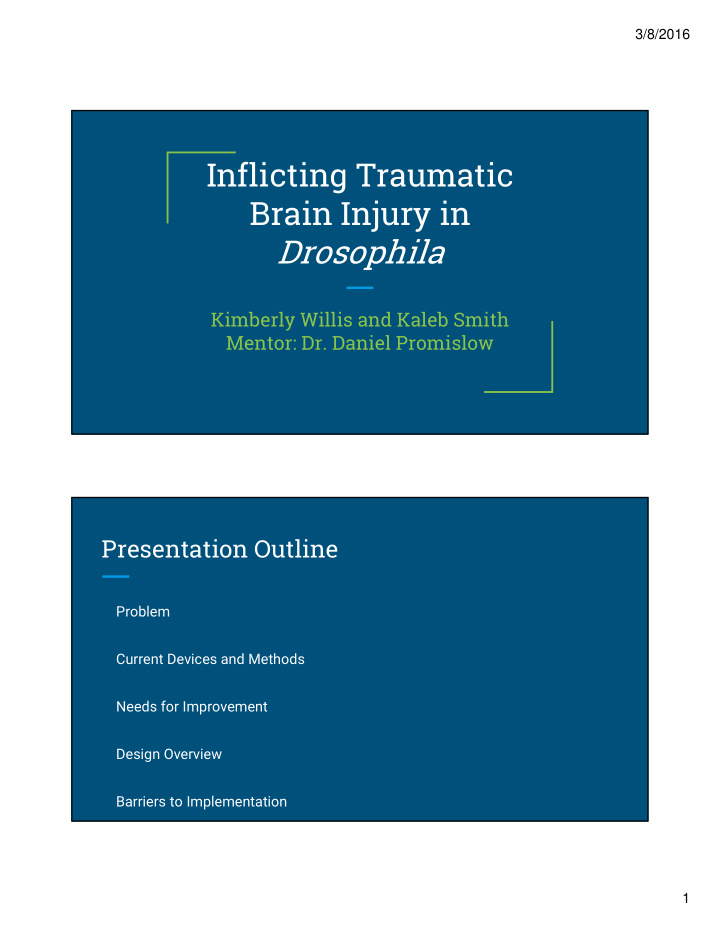



3/8/2016 Inflicting Traumatic Brain Injury in Drosophila Kimberly Willis and Kaleb Smith Mentor: Dr. Daniel Promislow Presentation Outline Problem Current Devices and Methods Needs for Improvement Design Overview Barriers to Implementation 1
3/8/2016 Background: Traumatic Brain Injury (TBI) Number one cause of brain damage in youth in the US. (1) Drosophila are used as a model because many symptoms are conserved, as well as having common molecular and architectural features as human brains. (3) Fruit flies need a different approach than typical methods of inflicting injury due to size, mass, and their negative geotaxis. Drosophila anatomy and physiology Analogs to the Human Brain: functionally diverse neurons and neurotransmitters an inelastic exoskeleton encapsulates the brain hemolymph provides separation and cushion between the brain and exoskeleton 2
3/8/2016 Current Methods and Devices HIT device: patent application submitted University of Wisconsin device Needs For Improvement Few devices can induce TBI in Drosophila TBI induction methods in larger animals unsuitable for Drosophila Reproducibility of injury is low in most available devices for Drosophila Methods that are reproducible for Drosophila typically have low throughput. 3
3/8/2016 Design Overview Phase One: Develop prototype, preliminary sensing. Phase Two: Improving sensors, automating, and tuning. Device consists of an arm, vial holder, strike pad, stepper motor (not pictured), and frame. Accelerometer will be mounted to vial holder. Barriers to Implementation Few legal or economic barriers due to lack of commercialization as a goal Social barriers down the line include genetic profiling controversies Ethical Issues include harm to animals and pain due to lack of anesthetics Technological impediments will likely result from electronics 4
3/8/2016 Evaluation of the Device Sensor Validation: Predicted vs measured acceleration Durability: Same injury every time? Device does not wear down? Consistency: Every vial in holder receive same injury? Mortality: Ideally, 50% mortality after 24 hours 5
3/8/2016 THANK YOU Any questions? 6
Recommend
More recommend